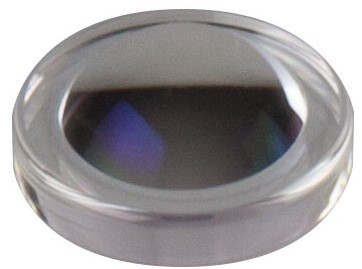The design of a compact high-speed and wide field of view (FOV) receiver is challenging due to the presence of two well-known trade-offs. The first one is the area-bandwidth trade-off of photodetectors (PDs) and the second one is the gain-FOV trade-off due to the use of optics. The combined effects of these two trade-offs imply that the achievable data rate of an imaging optical receiver is limited by its FOV, i.e., a rate-FOV trade-off. To control the area-bandwidth trade-off, an array of small PDs can be used instead of a single PD. Moreover, in practice, a large-area lens is required to ensure sufficient power collection, which in turn limits the receiver FOV (i.e., gain-FOV trade-off). We propose an imaging receiver design in the form of an array of arrays. To achieve a reasonable receiver FOV, we use individual focusing lens for each PD array rather than a single collection lens for the whole receiver. The proposed array of arrays structure provides an effective method to control both gain-FOV trade-off (via an array of lenses) and area-bandwidth trade-off (via arrays of PDs). We first derive a tractable analytical model for the SNR of an array of PDs where the maximum ratio combining has been employed. Then, we extend the model for the proposed array of arrays structure and the accuracy of the analytical model is verified based on several Optic Studio-based simulations. Next, we formulate an optimization problem to maximize the achievable data rate of the imaging receiver subject to a minimum required FOV. The optimization problem is solved for two commonly used modulation techniques, namely, OOK and direct current biased optical orthogonal frequency division multiplexing with variable rate quadrature amplitude modulation. It is demonstrated that a data rate of ~ 24 Gbps with a FOV of 15 is achievable using OOK with a total receiver size of 2 cm by 2 cm.
翻译:压缩高速和宽视场接收器( FOV) 的设计具有挑战性, 原因是存在两个众所周知的折叠交易。 第一个是光检测器( PDs) 的区域带宽交易, 第二个是使用光学的增益- FOV 交易。 这两个折叠交易的综合效果意味着成像光学接收器的可实现数据率受到它的 comved (cOV) 的可实现数据率的限制, 即一个速率- FOV 交易。 为了控制区域带宽置交易, 可以使用一个小 PD 的阵列, 一个小 PD 结构, 而不是一个单一的 PD 。 此外, 在实践中, 需要一个大区域镜头可以确保足够的电源收集, 从而反过来限制接收器 FOV( 增益- FOVV 交易) 。 我们建议以阵列的形式设计一个成一个成像像像素接收器的立式接收器。 为了实现一个合理的接收器, 我们使用每个PD阵列的直径透视镜头, 而不是整个接收器的单个收集镜头。 提议的阵列的阵列的阵列, 一个基于OFOFOD 的阵列的阵列的机的直径分析器, 一个基于直径分析器的阵列的阵列的阵列的阵列, 一个用来用来用来用来提供一个用于一个直径的直径的直控的直控的直控的计算法, 一个直控的计算法, 一个直控的计算法, 一个直控件, 一个直控的计算法, 一个为一个直控路路路路路路路到一个直控的计算法, 一个对等的计算法到一个直到一个直到一个直控的直到一个直到一个直控的直到一个直到一个直到一个直到一个直到一个直到一个直到一个直到一个直到一个。























